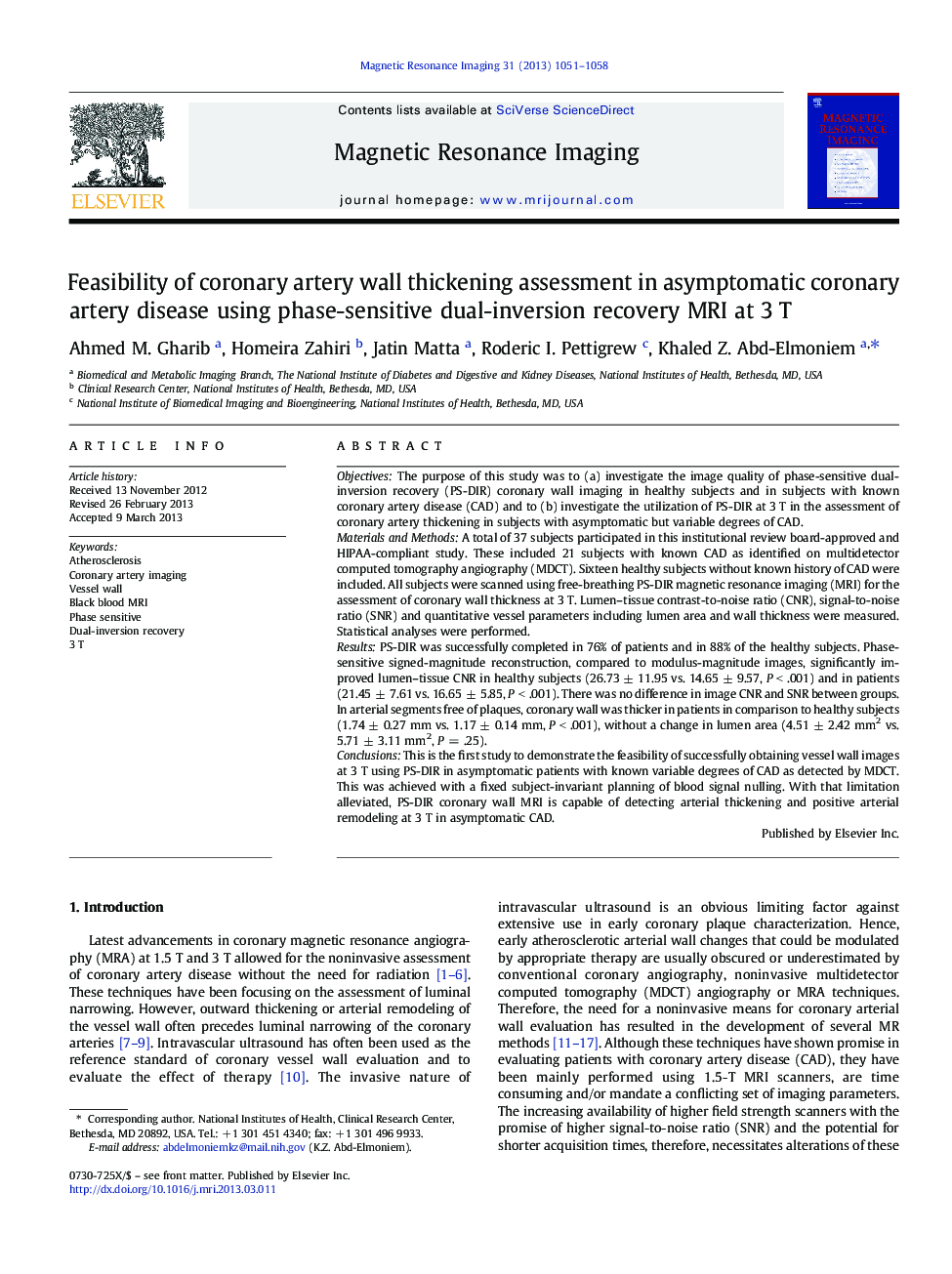| Article ID | Journal | Published Year | Pages | File Type |
|---|---|---|---|---|
| 1806646 | Magnetic Resonance Imaging | 2013 | 8 Pages |
ObjectivesThe purpose of this study was to (a) investigate the image quality of phase-sensitive dual-inversion recovery (PS-DIR) coronary wall imaging in healthy subjects and in subjects with known coronary artery disease (CAD) and to (b) investigate the utilization of PS-DIR at 3 T in the assessment of coronary artery thickening in subjects with asymptomatic but variable degrees of CAD.Materials and MethodsA total of 37 subjects participated in this institutional review board-approved and HIPAA-compliant study. These included 21 subjects with known CAD as identified on multidetector computed tomography angiography (MDCT). Sixteen healthy subjects without known history of CAD were included. All subjects were scanned using free-breathing PS-DIR magnetic resonance imaging (MRI) for the assessment of coronary wall thickness at 3 T. Lumen–tissue contrast-to-noise ratio (CNR), signal-to-noise ratio (SNR) and quantitative vessel parameters including lumen area and wall thickness were measured. Statistical analyses were performed.ResultsPS-DIR was successfully completed in 76% of patients and in 88% of the healthy subjects. Phase-sensitive signed-magnitude reconstruction, compared to modulus-magnitude images, significantly improved lumen–tissue CNR in healthy subjects (26.73 ± 11.95 vs. 14.65 ± 9.57, P < .001) and in patients (21.45 ± 7.61 vs. 16.65 ± 5.85, P < .001). There was no difference in image CNR and SNR between groups. In arterial segments free of plaques, coronary wall was thicker in patients in comparison to healthy subjects (1.74 ± 0.27 mm vs. 1.17 ± 0.14 mm, P < .001), without a change in lumen area (4.51 ± 2.42 mm2 vs. 5.71 ± 3.11 mm2, P = .25).ConclusionsThis is the first study to demonstrate the feasibility of successfully obtaining vessel wall images at 3 T using PS-DIR in asymptomatic patients with known variable degrees of CAD as detected by MDCT. This was achieved with a fixed subject-invariant planning of blood signal nulling. With that limitation alleviated, PS-DIR coronary wall MRI is capable of detecting arterial thickening and positive arterial remodeling at 3 T in asymptomatic CAD.
